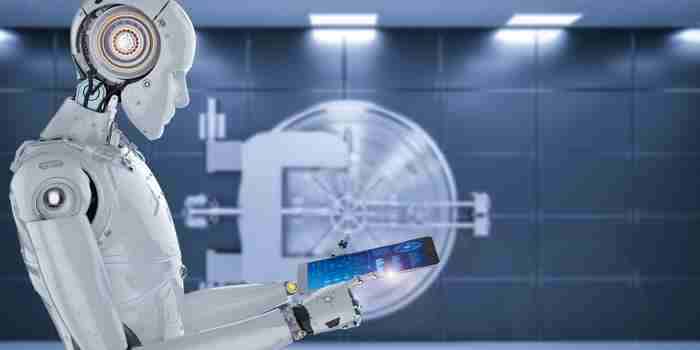In the past few years, artificial intelligence has advanced so quickly that it now seems that hardly a month goes by without a newsworthy AI breakthrough.
copyright by www.entrepreneur.com
 In areas as wide-ranging as speech translation, medical diagnosis and game play, we have seen computers outperform humans in startling ways. This has sparked a discussion about what impact AI will have on employment.
In areas as wide-ranging as speech translation, medical diagnosis and game play, we have seen computers outperform humans in startling ways. This has sparked a discussion about what impact AI will have on employment.
Some fear that as AI improves, it will supplant workers in the job force, creating an ever-growing pool of unemployable humans who cannot economically compete with machines in any meaningful way. This concern, while understandable, is unfounded.
AI will be the greatest job engine the world has ever seen.
Technology has progressed nonstop for 250 years, and in the U.S. unemployment has stayed within a narrow band of 5 to 10 percent for almost all that time, even when radical new technologies such as steam power and electricity came on the scene.
AI is the most empowering of all technologies because it effectively makes anyone who uses it smarter. It increases the productivity of anyone who can apply it to their job. Once again, you hear the same refrain: “It will destroy jobs.” And sure, you can look around and find jobs that it might well eliminate, such as order taker at a fast-food restaurant. But, that is not in any way the entire story.
No, the whole story involves the other part of the equation. What will this technology enable?
Consider the ATM. If you had to point to a technology that looked as though it would replace people, the ATM might look like a good bet. It is, after all, an automated teller machine. And yet, there are more tellers now than when ATMs were widely released. How can this be? Simple: ATMs lowered the cost of opening bank branches, and banks responded by opening more, which required hiring more tellers.
Thank you for reading this post, don't forget to subscribe to our AI NAVIGATOR!
This is one of the fundamental dynamics of technology and employment. As technology lowers costs, people respond by one of two things: They either buy more of the item (as banks did with branches) or they spend their saved money elsewhere, creating new jobs in those areas.[…]
read more – copyright by www.entrepreneur.com


In the past few years, artificial intelligence has advanced so quickly that it now seems that hardly a month goes by without a newsworthy AI breakthrough.
copyright by www.entrepreneur.com
Some fear that as AI improves, it will supplant workers in the job force, creating an ever-growing pool of unemployable humans who cannot economically compete with machines in any meaningful way. This concern, while understandable, is unfounded.
AI will be the greatest job engine the world has ever seen.
Technology has progressed nonstop for 250 years, and in the U.S. unemployment has stayed within a narrow band of 5 to 10 percent for almost all that time, even when radical new technologies such as steam power and electricity came on the scene.
AI is the most empowering of all technologies because it effectively makes anyone who uses it smarter. It increases the productivity of anyone who can apply it to their job. Once again, you hear the same refrain: “It will destroy jobs.” And sure, you can look around and find jobs that it might well eliminate, such as order taker at a fast-food restaurant. But, that is not in any way the entire story.
No, the whole story involves the other part of the equation. What will this technology enable?
Consider the ATM. If you had to point to a technology that looked as though it would replace people, the ATM might look like a good bet. It is, after all, an automated teller machine. And yet, there are more tellers now than when ATMs were widely released. How can this be? Simple: ATMs lowered the cost of opening bank branches, and banks responded by opening more, which required hiring more tellers.
Thank you for reading this post, don't forget to subscribe to our AI NAVIGATOR!
This is one of the fundamental dynamics of technology and employment. As technology lowers costs, people respond by one of two things: They either buy more of the item (as banks did with branches) or they spend their saved money elsewhere, creating new jobs in those areas.[…]
read more – copyright by www.entrepreneur.com
Share this: